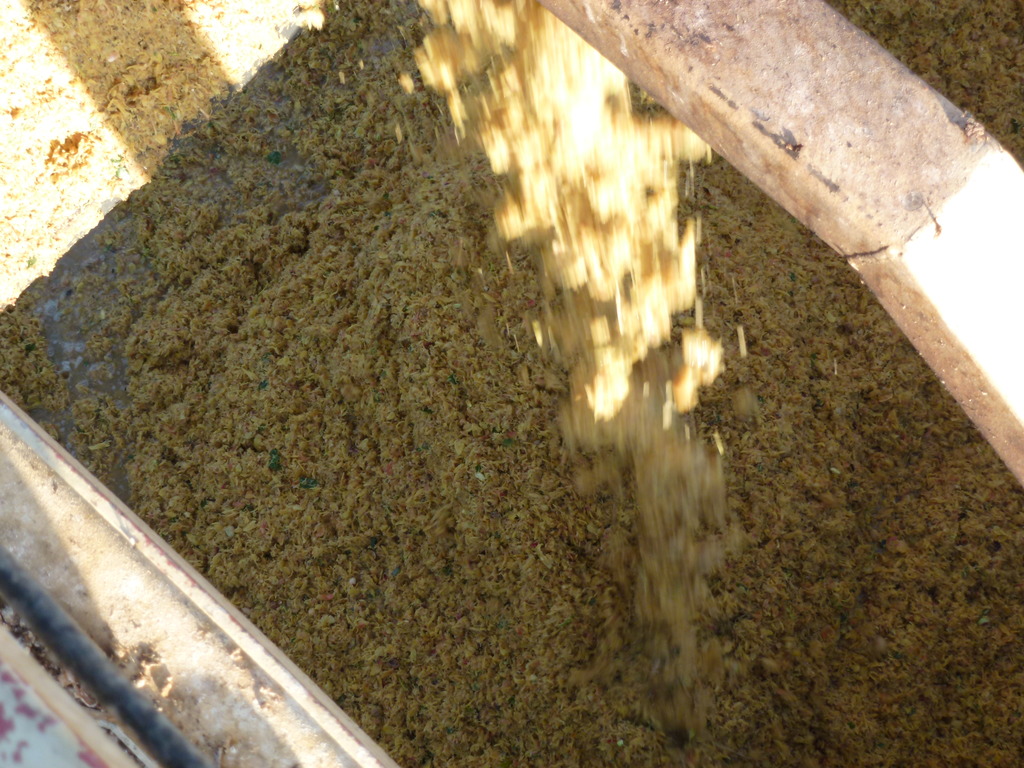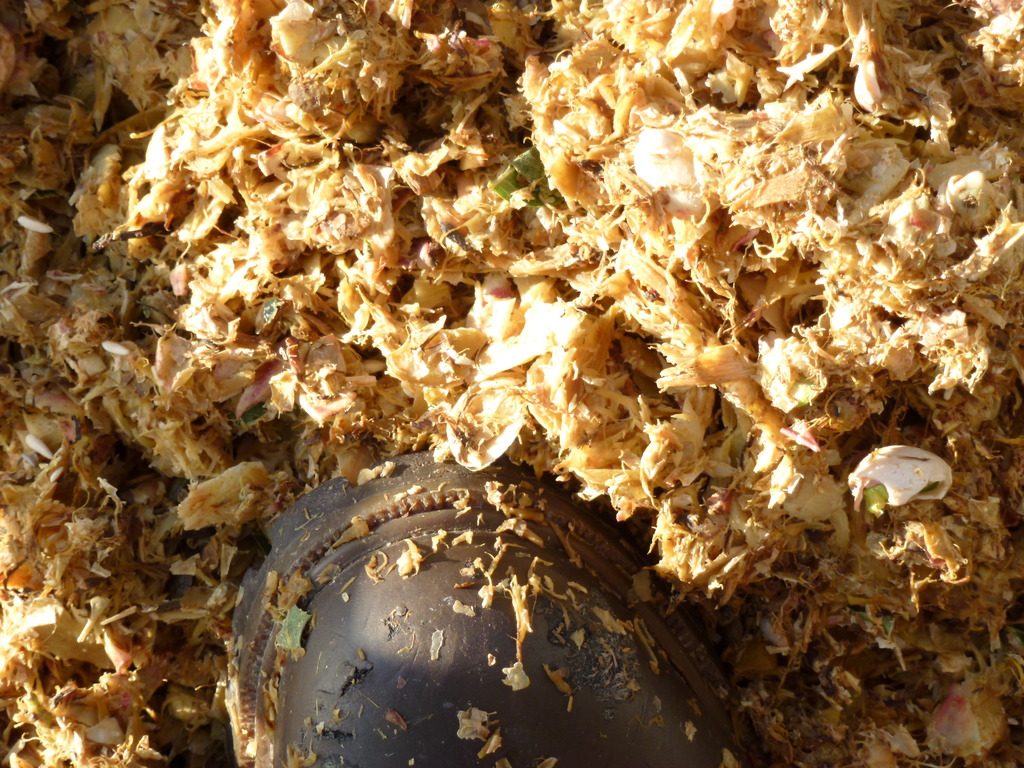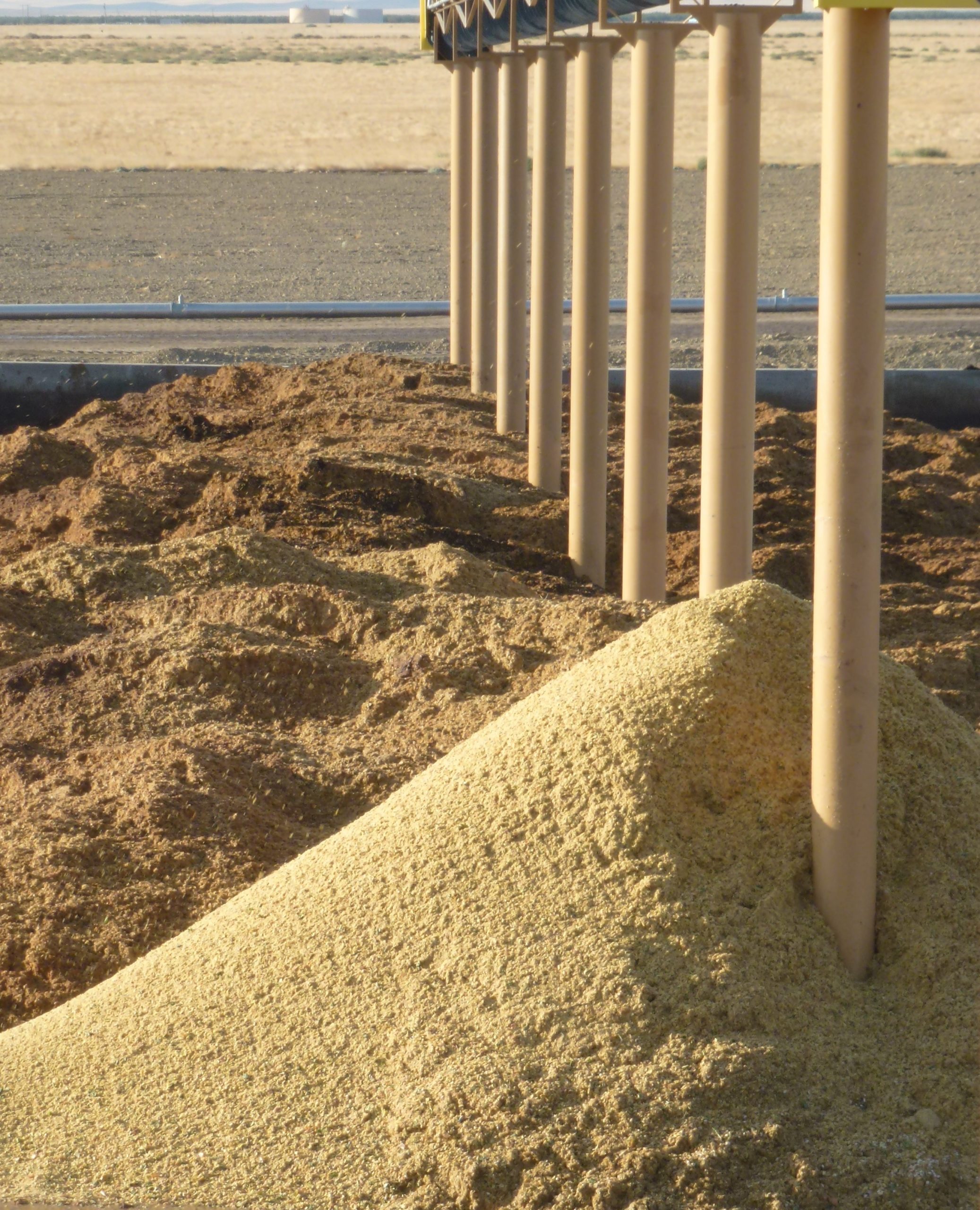Updated July 2021
Pistachio processors in California operate during a short harvest season, from September into October. The green berries, as harvested, are about the size of an olive. At the processing plant, an exterior layer of pulp is removed. This is done in abrasive peelers, with water. Once the rejects (immature and hollow seeds) are removed, the pistachios are dried, usually in GSI dryers. The product which comes out is the snack we are familiar with: a white shell, cracked opened by the heat, containing a delicious nut.
Setton Pistachio in Terra Bella is a very large processor. In 2002 they purchased two Vincent KP-16 screw presses to separate the waste pulp from peeler water. The dewatered pulp is given to farmers for blending as a cattle feed. (2021 – They recently purchased a sixth KP-16 press!)
In 2005 Setton processed 120 tons per hour of green berries. About one third of this weight, 40 tph, is pulp that surrounded the shell. Most of the time two KP-16’s can handle the load, giving the KP-16 a maximum rating of 20 tph of pulp.
Static screens are used ahead of the KP presses. These separate large quantities of water. This is effective in pre-thickening the flow to the presses. The solids from the screw press come out as a thick, fibrous mass. The rotating cone feature of the KP presses is not necessary at all.
Smaller scale pistachio operations might drain the pulp in static screens and then haul the soggy pulp for landspreading with a manure spreader. Others pump the wastewater flow with the pulp into a settling pond; between harvests, the dried ponds are emptied with excavators.
2021 Update:
This newsletter failed to provide data on moisture content. The screw presses remove free water, but pistachio press cake holds a great deal of bound organic moisture. In 2007 Vincent built three Model KP-24 presses for Paramount Farms. These each handled 50 tph of pulp, making about 30 tph of press cake. The press cake moisture content ran 81% to 83%. (A competing offering by US Farms had 87% moisture.) This was not what was expected, and Vincent ended up selling those presses to other customers.
Overall, 80% to 83% moisture has proven typical, although we have seen 78%. (Coincidentally, fresh orange peel usually is in that same range.) As a rule the pistachio cake is stackable. Little, if any, water will run from the pile. See the three photos below.
Since the original Setton installation, we have accumulated an impressive users’ list:
Monarch Nut Company
Primex Farms
Nichols Pistachio
Keenan Farms
All of these pistachio processors have multiple Model KP-16 screw presses.
ISSUE 157R



